I've been thinking about how much 2024 is feeling like the infamous drought year, 2012…
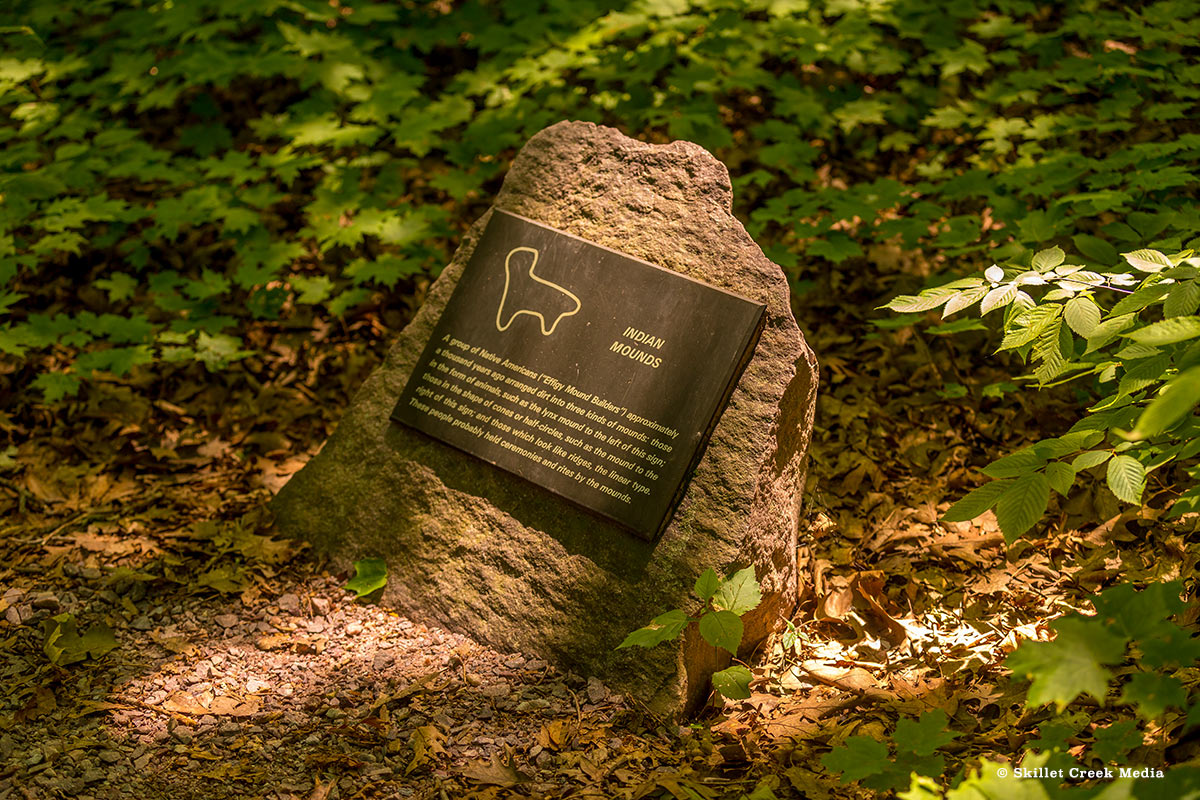
“We ask that as you walk over this land to please remember this is sacred ground to those of the mound building culture. The descendants of this culture are not a lost people but rather living, thriving American Indian cultures that today reside in what is now called the midwest. These native descendants continue to honor their ancestors buried here in religious ceremonies on these sacred sites. Please enjoy and respect your time among the “old ones” as their spirits will watch over you while you are here.”
– Chloris Low, Ho-Chunk, 2005 (Effigy Mounds National Monument)
Devil’s Lake’s Effigy Mounds
Updated, Friday, July 26, 2019 *
To the native people, this place has as always been sacred. Beginning around 1,400 years ago (Give-or-take) the woodland Indians, ancestors of the Ho-Chunk, (And 20 culturally associated American Indian tribes.) created a variety of mounds around Devil’s Lake. Mounds were sometimes burials and sometimes ceremonial. Effigy Mounds in the park include a bear, a lynx and a “bird-like” spirit mound along the south shore. To the Ho-Chunk, this lake and these mounds are still considered sacred spaces today. When you stand amongst the ancient mounds on a rare, quiet day in the park, it’s easy to understand why. As author and former park naturalist Ken Lange once noted, this still is, “A lake where spirits live.”
Impetus
Today, Devil’s Lake State Park hosts millions of visitors each year. Many of them, have little or no knowledge of effigy mounds. Others don’t recognize them on the land. Which is why they sometimes walk over them… or worse.
What brought me to write this blog was an experience I had a few weeks back when I was walking along the park’s south shore and discovered celebratory balloons tied to sapling trees growing from what is called the “Bird Mound” on the eastern side of the picnic area. This mound is an amazing winged effigy which dominates the eastern edge of Devil’s Lake’s south shore day-use area.
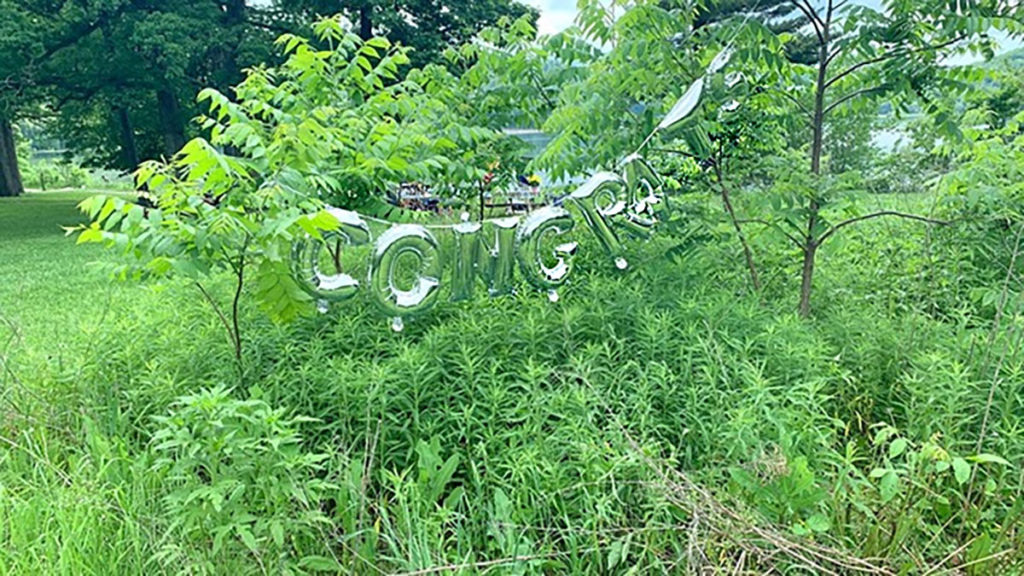
Just a week after the balloon incident, I came across folks using the mound as the back boundary in their volleyball game. Just a couple of weeks later, there was a picnic table pushed alongside it. In the context of a “sacred site”, this felt like desecration.
The first inclination, of course, is to be angry. Who would do such a thing? But as we know, impulsive reactions are rarely wise ones. And often wrong-headed. Once I had time to think about it, I went out and walked around the mounds. I realized that there was almost no way for park visitors to know what they were doing. Not in context anyway.

I saw that coming from the busiest, or highest foot trafficked parts of the park, you have nothing to tell you what those areas of tall grass or weeds are. While many of the mounds have small stone markers, most from the early 1920’s, they are rarely in the area where the volume of people would approach the mounds from. The mounds often just look like weedy areas and that invites some people to treat them as such.

Unless every visitor reads the park newspaper or comes at the mounds from the right direction, AND sees the small markers, they’ll just see “weeds”. The “harm” was mostly unintentional. They were simply looking for a good place to hang balloons on a special occasion, or as the volleyball family said to me, they were trying to back out of the way of the busy picnic area. Good folks, just lacking information.
Other Issues
Once I had started looking, I realized this wasn’t an isolated issue. I also found visitors had dumped charcoal on a Bear Mound on the north shore.

And this linear mound (below.) near the north shore boat landing seems to have been partially mowed or is simply wearing down under heavy foot traffic and is eroding.

This mound (below) is located near a utility road and dumpsters. Without any buffer between the mound and the road, it’s easy to damage.

Asking Questions
So, having run this website for over 20 years, I have been involved in more than a few conversations about the effigy mounds over the years. I’ve heard some of the issues and roadblocks that folks feel are preventing solutions but it was worth some fresh conversations. Over the last month or so I’ve met with a variety of people who care about the mounds and got some great input. I also reached out to the DNR Archeologist/Historic Preservation Officer as well.*
Mulling over my experiences with what I’ve heard from various folks, I next dug into reading the Wisconsin Department of Natural Resources “BURIALS, EARTHWORKS, AND MOUNDS PRESERVATION POLICY & PLAN”. This helped me to understand some departments concepts and limitations. I also took time to visit Effigy Mounds National Monument and looked at how they were managing the mounds as well. Ultimately, I realized that a variety of stakeholders should come together to figure it out, maybe as part of the upcoming master planning over the winter. All I can do is raise awareness and pledge volunteer support.
Possible Solutions
I know we all hate too many signs, but with a heavy mix of cultures and languages at the park (Not to mention folks who simply don’t read the papers or websites), it’s important to place interpretive signs in visible locations. If visitors know what they are looking at ARE ancestral effigy mounds, I think that’s half the battle.
Next, I feel we need simple signage visible from all busy approaches that define the mounds clearly. Something like this from Effigy Mound NM would work well in my opinion. The signs say, don’t “walk” on the mounds, but more importantly, they say, “respect” and “this is an effigy mound”.

Final Word
You see, Devil’s Lake State Park is a unique monster. It’s crazy busy and many of the mounds are located right in the middle of the busiest “play” areas of the park. This heavy traffic puts the mounds at a level of risk that they don’t see elsewhere. This requires a more robust plan involving education, interpretation and some form of visual barriers.
The Wisconsin DNR has been doing a pretty respectable job over the last couple of years responding to Devil’s Lake’s growth. I know, no one agrees on everything! (Personally, I’m not big on that new parking lot!) Still, there are fantastic upgrades everywhere, the wardens and other staff are working their collective butts off. (Thank them when you see them out!) So this is in no way a diss, it’s simply that the mounds need attention too and given all of the other issues, I feel like they’ve been lost in the shuffle.
Bottom line, I’m no expert and I don’t have much of a voice, so I’d encourage folks who care about the effigy mounds to speak up and together let’s take our turn to protect and honor these sacred spaces for another generation and hopefully they will survive another thousand years.
Update: I want to thank everyone who shared this post, commented and contacted me. I want to let you know that the DNR’s archeologist got out and had a look at the mounds, and hopefully we’re moving in a good direction.

For nearly 2 decades the Skillet Creek blog has focused on 3 main goals; To inspire you to visit and explore the Devil’s Lake region, to help you get the most your visit by sharing tips, events, and other helpful information. Lastly to advocate for our environment & wildlife and talk about how we can keep our natural areas amazing now and into the future! That last goal can sometimes cause controversy, but it’s the only way we can accomplish the first two. – Derrick Mayoleth, Owner.
This Post Has 3 Comments
Comments are closed.

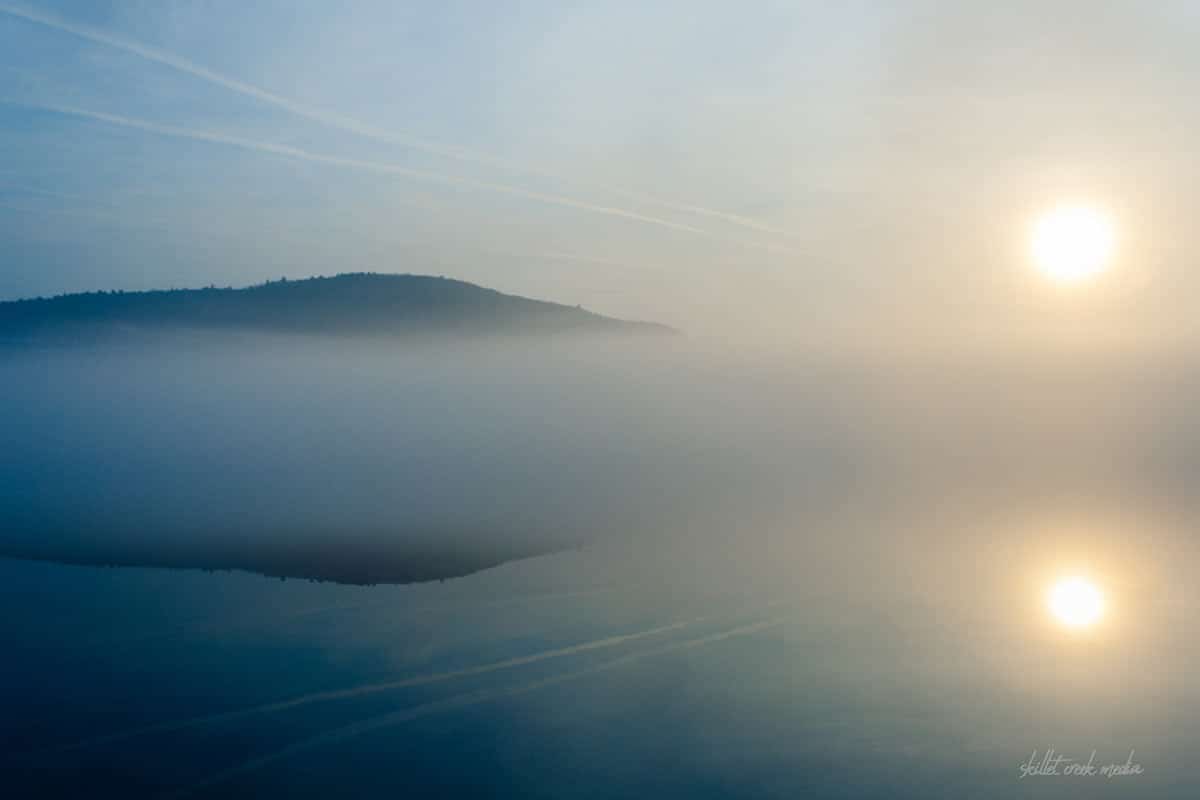
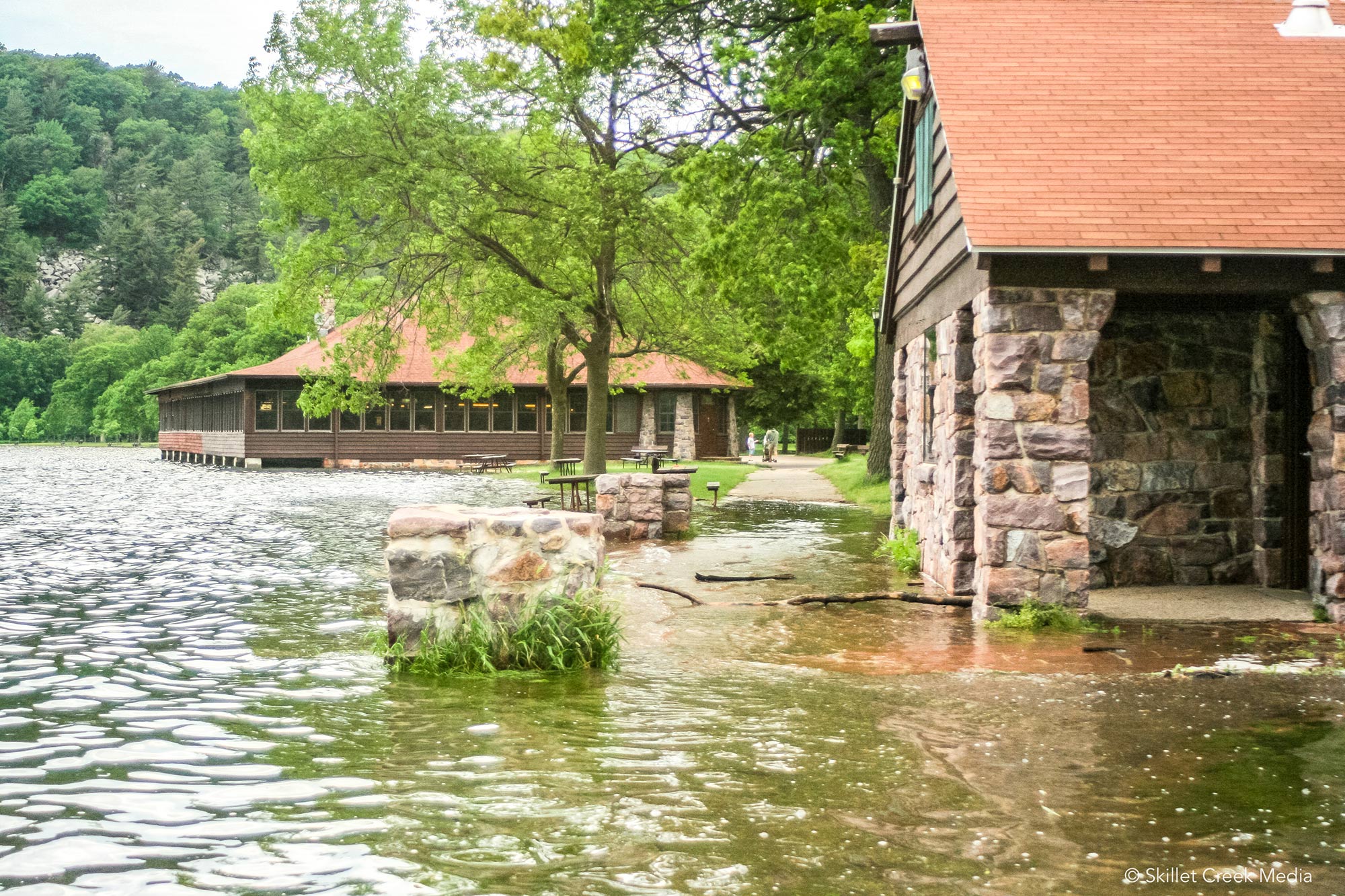
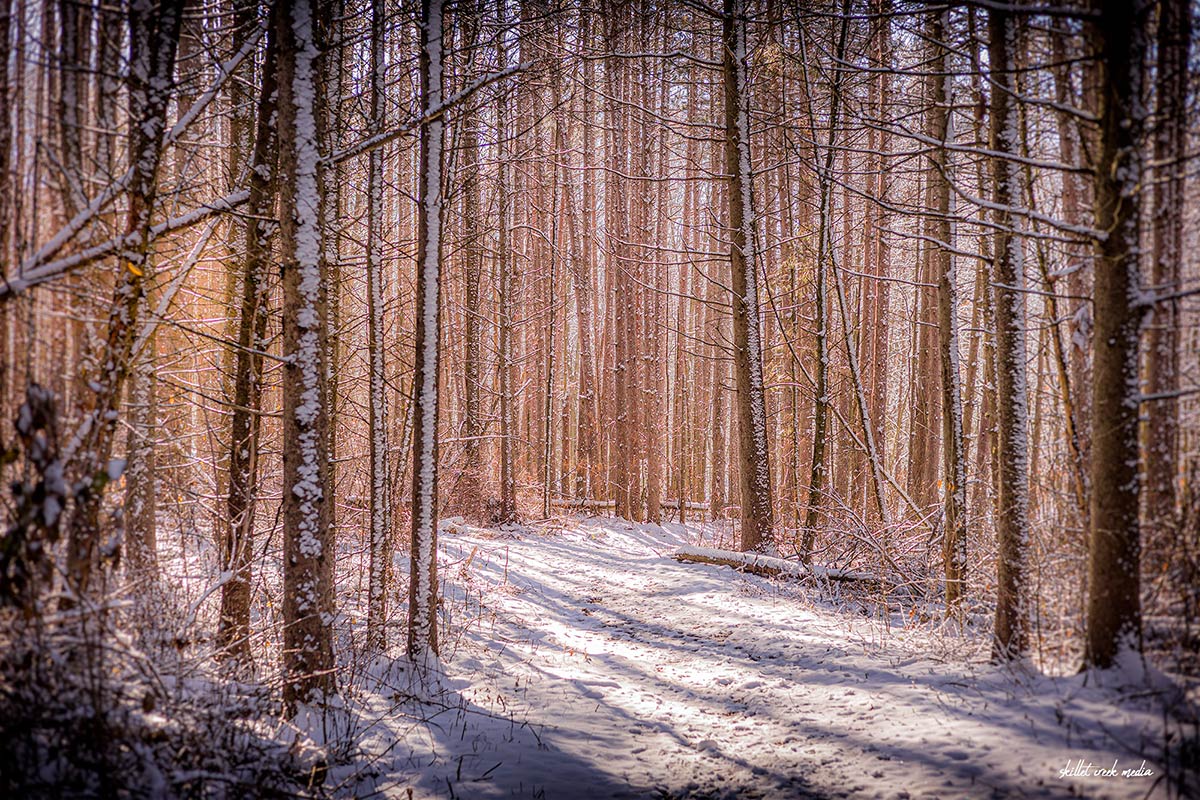
If we really want to honor sacred space, we could probably start with getting rid of the “Devils Lake” name part…similar to “Devils Tower” in Wyoming, this name is a relic of the 19th century lack of understanding of geology (hence “made by the devil”). I much prefer the Ho-Chunk -offered name of “Spirit Lake” more such a beautiful and special spot……just my opinion….
Valid point. Speaking with Ho-Chunk who were presenting at the park last evening, they specifically would use De Wakacak, which you could say needn’t even be translated. Take Denali for instance. Ultimately, I’d defer to whatever their wishes were. Right now I think education and raising awareness regarding the mounds AND partnerships with the Ho-Chunk in various ways can be a good start. I think the program last night offered a lot of potential.
If you really want to feel good about honoring sacred space, you can encourage better things than a name change. How about starting with not demolishing areas of trees for more parking or not constructing an unnecessary Visitor Education Center. You know, things that actually have substance.